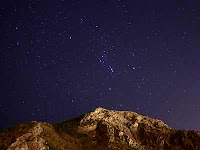[I wrote this essay in July 2006, during the height of Ogden's gondola war. The intent was to submit it to the Standard-Examiner as a guest commentary, but I decided against using my professional credentials in such a political way. Now, almost three years later, I guess I can say "I almost told you so!".]
I clearly remember when I first heard the news.
It was a spring morning in 1989. I was a graduate student, finishing my PhD in theoretical physics at the Stanford Linear Accelerator. When I arrived at the lab that day the hallways were buzzing with the news from Utah.
A colleague filled me in: Two chemists at the University of Utah were claiming to have produced a sustained nuclear fusion reaction in a tabletop experiment.
I'm sure my jaw dropped. Like my colleagues, I instantly knew that if this report were true it would be the greatest technological development since the steam engine. It would provide the world with clean, abundant, inexpensive energy, averting the looming crises of fossil fuel depletion and global warming.
But the mood around our lab was not one of celebration. Instead we were asking each other questions: What was the evidence? How, exactly, could it possibly work? Have they tried such-and-such? Who are these guys, anyway?
Nobody could be absolutely sure the claim from Utah was false, given the minimal and vague information that was available at that time. But in science, as in everyday life, a person soon learns that most extraordinary claims, though they might conceivably be possible, turn out to be false. Our motto is: Extraordinary claims require extraordinary proof.
Everyone knows the rest of the story. The initial excitement was tremendous and understandable—given the natural human tendency toward wishful thinking. The Utah Legislature, in a ringing endorsement, even appropriated $5 million for additional cold fusion research.
Yet the extraordinary proof never came. After the press conference announcing their "discovery," Stanley Pons and Martin Fleischmann refused to answer the many questions that other scientists were asking. They never submitted a description of their experiment and their data to a scientific journal for scrutiny by their peers. They stalled and dodged the questions as long as they could, with a series of excuses that gradually descended "from foolishness to fraud" (as described by Robert Park in his book
Voodoo Science).
Meanwhile, working from what little information was available, scientists around the world tried to replicate the experiments. Those with reliable and fully documented results all failed. Pons and Fleischmann eventually left the country; the university’s president also lost his job. The University and the State of Utah became the butts of jokes that are still told among scientists and others worldwide.
Fast-forward to Ogden, 2006. The hallways are abuzz with another exciting idea, which promises to be the most important development in our city since the arrival of the railroad, bringing new prosperity to one and all. I'm referring, of course, to the proposal to build a resort in Malan's Basin and a pair of gondolas connecting it to downtown, financed by a new foothill residential development around a redesigned Mt. Ogden Golf Course.
The extraordinary claims in this case are many:
- A small, remote ski area on very steep terrain will be economically viable.
- 350 condominiums can be built in a narrow mountain valley without creating geological hazards.
- The resort will not require a road for construction or emergency access.
- A high-tech sewage treatment system will make it safe to discharge wastewater into Malan’s Falls and pack out solid waste by gondola.
- Modest-sized homes on Ogden's east bench will sell for nearly a million dollars each.
- Moving the golf course onto steeper mountain slopes will make it more playable.
- Adding 400 homes and six miles of streets to the east bench will improve our trail system.
- Tourists will be eager to park downtown and take a 36-minute gondola ride to the resort.
- The gondola can double as a practical means of urban mass transit.
Just as with cold fusion, there's a natural tendency to want to believe these wonderful claims—and we can't be absolutely sure that any of them are false. But again, extraordinary claims require extraordinary proof. Even if we generously grant each of these nine claims an independent 50% chance of being true, the odds of them all being true are less than one in 500.
Several other parallels to the cold fusion story are equally striking:
- The proposal is being pitched directly to the media and the public, before being scrutinized by experts.
- There exists no formal description of how it all supposedly works.
- The chief proponents, though not total amateurs, lack the credentials we would ordinarily expect.
- The proponents have been elusive, declining to answer technical questions on the record.
- A legislative body may be asked to endorse the project before we know whether it's feasible.
Disturbingly, some proponents of the Ogden development project are even taking the first steps from foolishness toward fraud, spreading misinformation about such things as the Snowbasin connection and alternative transit proposals.
Whether this story will continue to parallel that of cold fusion remains to be seen. Let's hope, at least, that decision makers will wait for more facts before giving any endorsements. If they don't, there's an excellent chance that Ogden will become the butt of jokes for decades to come.
Dan Schroeder is a professor of physics at Weber State University. In his spare time he does volunteer work for the Sierra Club and the Ogden Trails Network Committee.

















